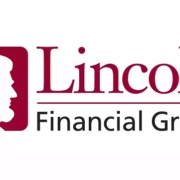A College-Savings Strategy That Could Flunk Out – Wall Street Journal – 07/02/11
The Wall Street Journal
Weekend Investor – College Savings – July 2, 2011
A College-Savings Strategy That Could Flunk Out
By Mary Pilon and Leslie Scism
With all the college-savings options available to parents these days, one vehicle has largely flown under the radar: life insurance. While it has some major advantages, investors should understand the risks.
In the most commonly sold types of permanent life, the money in the savings account is invested mostly in high-quality bonds. Under variable universal life, the buyer has the option to invest in stocks in mutual-fund-like “subaccounts.”
The biggest flaw, advisers say, is the way the policies are sold. State insurance officials and the Securities and Exchange Commission allow sales representatives to show projections of possible earnings in the savings account as high as 12% a year—a rate of return that virtually no financial planner would consider realistic.
Comments July 2, 2011
The Nuts and Bolts of a Variable Universal Life Insurance (VULI) Policy. Although often marketed as a college savings plan or retirement plan, VULI is simply stated…permanent life insurance. You can invest the cash value inside of the policy into one or more sub-accounts. Similar to mutual funds, sub-accounts invest in stocks, bonds and other risky investments. Although any gains and interest inside the policy are tax free, there are some concerning aspects of these policies. These include a host of fees: 1) premium expense charges, 2) policy fees, 3) mortality and expense (M&E) charges, 4) surrender charges, 5) increasing life insurance costs, and 6) additional rider fees. Combining something that is intended to be your safest financial instrument (life insurance) with risky investments (stocks and bonds) can be a recipe for disaster, forcing an implosion of the policy. The first step in defusing the implosion is obtaining a current prospectus that provides an overview of the policy. Next, obtain an in force illustration of the VULI policy, ideally every two to three years. It is at this is the time when the insurance agent’s marketing pitch for projected earnings is reconciled with reality.
529 Savings Plan. With a savings 529 plan, all earnings inside the plan are free from income tax as long as the withdrawals are used for higher education expenses (e.g.: undergraduate education, business school, law school and medical school). Not only are the assets you contribute to 529 accounts no longer part of your estate, but the capital appreciation, capital gains, dividends and interest are also no longer part of your estate. Grandparents concerned about their grandchildren being penalized when applying for financial aid should consider naming themselves as the beneficiary on their 529 accounts. Since the grandchildren are neither the owner nor the beneficiary on the accounts the 529 account assets cannot be taken into consideration for financial aid. Fortunately, there are no tax consequences if you change the designated beneficiary to another member of the family – according to the Internal Revenue Service. Following multiple years of financial aid, grandparents can then change the beneficiary on 529 accounts from their own name to their grandchildren.
Aaron Skloff, AIF, CFA, MBA
CEO – Skloff Financial Group
www.skloff.com/services-401k-403b-457.htm
Aaron Skloff, Accredited Investment Fiduciary (AIF), Chartered Financial Analyst (CFA), Master of Business Administration (MBA), is the Chief Executive Officer of Skloff Financial Group, a Registered Investment Advisory firm. The firm specializes in financial planning and investment management services for high net worth individuals and benefits for small to middle sized companies. He can be contacted at www.skloff.com or 908-464-3060.












